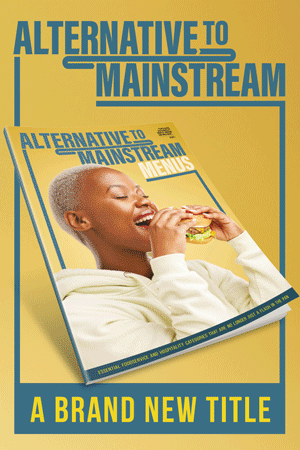Industry expert: B&I

Ian Thomas, CEO of Bartlett Mitchell, tells us how B&I is bouncing back...
After what has been an incredibly challenging period in the history of our sector, we are delighted to see a significant uplift in activity across the board. There has been a major uptake as each week passes with more and more people coming back to the office. September has already doubled the volumes of August and we expect it to continue.
Of the business and industry (B&I) sites that did shut down during the pandemic, 90% are now reopening in some capacity. This is clearly wonderful news for our teams, clients and suppliers.
What is also interesting is that, of the clients who had to cease their catering operations at the start of the pandemic, the vast majority are coming back to us to see how we can develop a new model for them – be it a ‘traditional’ catering concept or through the Mosaic subscription model we introduced to help during the transition period.
As far as trends go, we are also seeing an increase in free-issue sites where clients are using food as an attraction to bring their teams back to the office. In some B&I sites, our sales are actually higher than they were pre-pandemic due to this reason alone. This is testament to the importance of catering and food as part of any organisational infrastructure and strategy. Food offers can significantly enhance the workplace experience.
In some sites, customers are actually choosing which days to go in based on our menus, so we cannot underestimate the role that catering can play in people coming back to work. We have always known that catering and hospitality plays a central part in the corporate real estate and FM strategy of any business, however, this transition period has simply reinforced this even more.
The end of furlough, I believe, it is only going to be a positive development, as it will get everybody back into work, whether it’s for us, our clients, or our suppliers. It encourages businesses to make decisions about what the next steps are and will create some level of certainty.
The scheme was much-needed and incredibly helpful to the economy, but it feels like the time is right to move on and start the rebuilding process. The end of the scheme also brings the labour back into the industry and gets people motivated again.
While things are looking more positive in some areas, the people issues in our sector are clear for all to see. We are just returning to some form of increased uptake and there is already a need far more recruits. This challenge isn’t going anyway anytime soon and, despite the fact that there is a lot going on across the board to recruit more team members, we are seeing a gap in skills, which is going to create immediate difficulties for the whole sector moving forward.
I do believe that it is going to take approximately three to six months for teams to get used to their ‘normal’. People will need to find their new routines, and this is going to take a while to settle. At the moment, organisations are working hard to work out their schedules, so there will be a period of transition and adjustment to hybrid working.
We in turn need to adjust according to their movements and behaviours, so will be watching closely as trends emerge and settle. We want to do what we can to make sure our clients teams want to come back to the workplace and this needs to be developed based on the exacting needs of our clients.
It has been a tough time and I think the sector has clearly been bruised, but there is a renewed energy where everybody wants to come back hard and fast. There are challenges we are going through with staffing, supply chain and so on, but these are hurdles we have to get over. I firmly believe that, because of the resilience the sector has built up over the last 18 months, we are even better at this and will come through it stronger than ever.
What we do know is that we will all have to work even more closely with clients than we have ever done. Whether it’s on food waste, getting menus right, pricing, or staffing, we all need to collaborate more to serve our collective interests.
What we are seeing is that, while the tech is great, people are really keen on personal interaction. We know that this is a key driver at the moment, so we are working on a number of hybrid solutions to tackle this. For us, the tech needs to be a key component of the experience, not the replacement for direct human contact.







